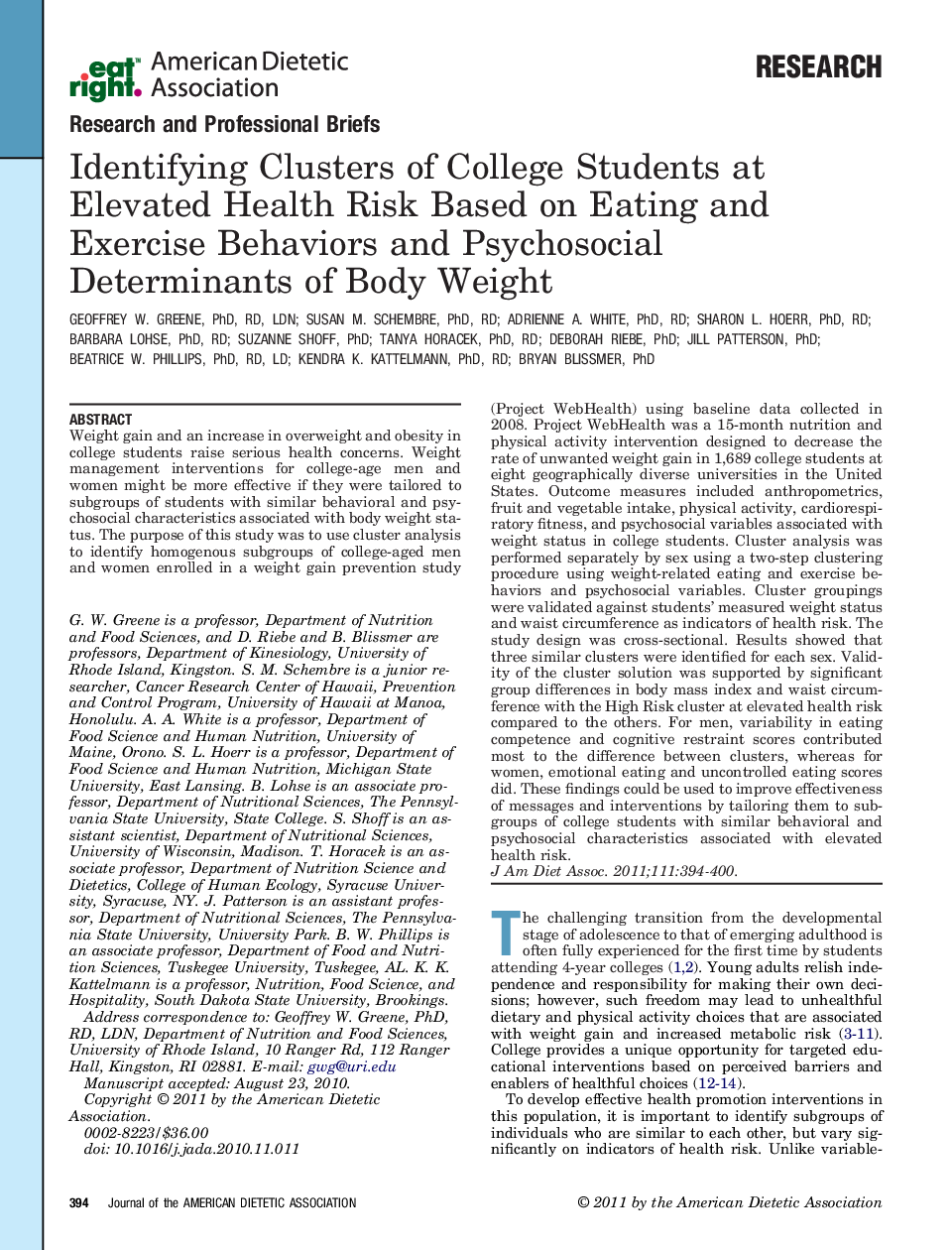| کد مقاله | کد نشریه | سال انتشار | مقاله انگلیسی | نسخه تمام متن |
|---|---|---|---|---|
| 2654333 | 1139808 | 2011 | 7 صفحه PDF | دانلود رایگان |
Weight gain and an increase in overweight and obesity in college students raise serious health concerns. Weight management interventions for college-age men and women might be more effective if they were tailored to subgroups of students with similar behavioral and psychosocial characteristics associated with body weight status. The purpose of this study was to use cluster analysis to identify homogenous subgroups of college-aged men and women enrolled in a weight gain prevention study (Project WebHealth) using baseline data collected in 2008. Project WebHealth was a 15-month nutrition and physical activity intervention designed to decrease the rate of unwanted weight gain in 1,689 college students at eight geographically diverse universities in the United States. Outcome measures included anthropometrics, fruit and vegetable intake, physical activity, cardiorespiratory fitness, and psychosocial variables associated with weight status in college students. Cluster analysis was performed separately by sex using a two-step clustering procedure using weight-related eating and exercise behaviors and psychosocial variables. Cluster groupings were validated against students' measured weight status and waist circumference as indicators of health risk. The study design was cross-sectional. Results showed that three similar clusters were identified for each sex. Validity of the cluster solution was supported by significant group differences in body mass index and waist circumference with the High Risk cluster at elevated health risk compared to the others. For men, variability in eating competence and cognitive restraint scores contributed most to the difference between clusters, whereas for women, emotional eating and uncontrolled eating scores did. These findings could be used to improve effectiveness of messages and interventions by tailoring them to subgroups of college students with similar behavioral and psychosocial characteristics associated with elevated health risk.
Journal: Journal of the American Dietetic Association - Volume 111, Issue 3, March 2011, Pages 394–400
